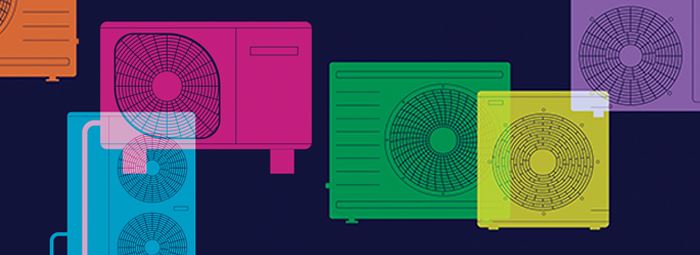
©2023 This excerpt taken from the article of the same name which appeared in ASHRAE Journal, vol. 65, no. 12, December 2023.
About the Author
Steve Kavanaugh, Ph.D., is professor emeritus of mechanical engineering, University of Alabama.
The thermal performance of the ground heat exchanger (GHX) is an important component of the economic analysis and design of ground source heat pump (GSHP) systems. It is critical that models agree with measured short- and long-term GHX thermal performance. This article reviews field data from long-term GSHP systems that often diverge from GHX model results, and in doing so shows why it’s necessary to obtain much larger field data sets.
Information from soil scientists’ research suggests that heat transfer mechanisms in moist porous soils and formations result in behavior that is not fully captured by conduction heat transfer models. The ability to accurately model GHX performance is limited not only by heat transfer complexity but also by the difficulty of gathering soil/formation moisture and porosity data from depths in which vertical GHXs are inserted. Heat transfer rates, equipment specifications and building performance must also be well characterized. Efforts to enhance GHX models and resulting GSHP performance will require much larger field data sets than those currently available.
Figure 1 demonstrates the theoretical temperature rise predicted by a commonly used vertical GHX model over a 20-year period when an imbalance in the amount of heat rejected to the ground exceeds the amount removed on an annual basis. The figure indicates the first year average GHX water temperature is 54°F (12°C) with a peak of 62°F (17°C) and a minimum of 45°F (7°C). These values are well suited to efficient GSHP operation. In year 20, these values rise to 72°F, 80°F and 63°F (22°C, 27°C and 17°C), which are also suitable for GSHP operation. However, these increases are unacceptable at sites with much warmer ground temperature, (Tg), especially beyond year 20, because many high-density polyethylene (HDPE) GHXs are approaching 40 years of service.
An annual temperature decline can also occur when the amount of heat removed from the ground exceeds the amount rejected. The decline is somewhat mitigated because the heat of compressors, fans and pumps must be rejected into the formation in the cooling mode. In heating, this contribution is delivered into the building, which lowers the relative amount of heat required from the formation. Annual heat balance would be achieved if heat pumps operate 160 to 180 hours in heating for every 100 hours in cooling. However, the heat transfer mechanisms that can mitigate long-term temperature rise are different in the heating mode. Long-term formation temperature decline is likely to be more pronounced in heating than the rise in cooling for an equal amount of annual heat imbalance.
Read the Full Article
ASHRAE Members have free access to the full-text PDF of this article as well as the complete ASHRAE Journal archives back to 1997 in the Free Member Access Area.
Non-members can purchase features from the ASHRAE Bookstore. Or, Join ASHRAE!
Return to Featured Article Excerpts
Return to ASHRAE Journal Featured Article Excerpts